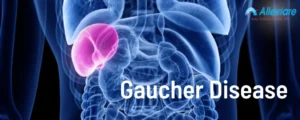What is Prostate Cancer?
Prostate cancer is set apart by an uncontrolled (dangerous) development of cells in the prostate organ. The prostate is the pecan-measured organ in men, found just underneath the bladder and before the rectum, encompassing the urethra – the cylinder that does pee of the bladder. The prostate delivers and stores liquid that assists with making semen
Prostate cancer is a common type of cancer in males, but it is highly treatable in the early stages. It begins in the prostate gland, which sits between the penis and the bladder.
Symptoms for Prostate Cancer?
Prostate cancer might cause no signs or indications in its beginning phases.
Prostate cancer growth that is further developed may Symptoms for prostate cancer, for example,
● Inconvenience peeing
● Diminished power in the surge of pee
● Blood in the pee
● Blood in the semen
● Bone agony
● Shedding pounds easily
● Erectile brokenness
When to See a Cancer Specialist
Make a meeting with your primary care physician on the off chance that you have any constant signs or manifestations that stress you.
Causes of Prostate Cancer?
● Prostate cancer develops when specific changes occur, usually in glandular cells.
● Cancerous or precancerous cells in the prostate gland are called prostatic intraepithelial neoplasia (PIN).
● Nearly 50%Trusted sources of all males over the age of 50 years have PIN.
● At first, the changes will be slow, and the cells will not be cancerous. However, they can become cancerous with time.
● Cancer cells can be high or low grade.
● High grade cells are more likely to grow and spread, while low grade cells are not likely to grow and are not a cause for concern.
Diagnosis for Prostate Cancer
If a male has manifestations that might diagnosis prostate cancer growth, the specialist will probably:
● Get some information about indications
● Get some information about close to home and clinical history
● Direct a blood test to evaluate PSA levels
● Do a pee test to search for other biomarkers
● Do an actual assessment, which might incorporate a computerized rectal test (DRE)
Treatment for prostate cancer
A few diseases develop at such a leisurely pace that treatment may not be required by any means. Others develop quickly and are hazardous so treatment is generally essential. Choosing what treatment you ought to get can be mind-boggling. Converse with your medical care group about your choices. Your treatment plan will rely upon:
● The stage and grade of the disease (Gleason score and TNM stage)
● Your danger class (regardless of whether the disease is low, moderate or high danger)
● Your age and wellbeing
● Your inclinations concerning aftereffects, long haul impacts, and treatment objectives
Erleada is a brand-name prescription medication. It’s used in prostate cancer treatment in adult males:
Nonmetastatic castration-resistant prostate cancer (nmCRPC). This type of prostate cancer is nonmetastatic, which means it hasn’t spread to other parts of your body.
Risk factor
Factor that can build your danger of prostate cancer include:
1.Older Age
Your danger of prostate cancer growth increments as you age. It’s generally normal after age 50.
2.Race
For reasons not really settled, Black individuals have a more serious danger of prostate cancer growth than do individuals of different races. In Black individuals, prostate cancer is likewise bound to be forceful or progressed.
3.Family History
If a close family member, like a parent, kin or youngster, has been determined to have diagnosis prostate cancer, your danger might be expanded. Likewise, on the off chance that you have a family background of qualities that increase the danger of bosom malignant growth (BRCA1 or BRCA2) or an extremely amazing family background of bosom disease, your danger of prostate malignancy might be higher.
4.Weight
Individuals who are large might have a higher danger of prostate cancer growth contrasted with individuals considered to have a solid weight, however studies have had blended outcomes. In hefty individuals, the disease is bound to be more forceful and bound to return after starting treatment.





